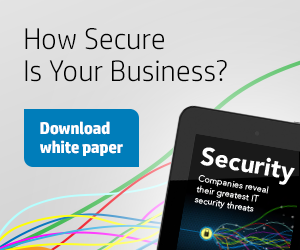How Virtualisation Benefits the Small Business
Written by Mel // November 3, 2015 // Business // Comments Off on How Virtualisation Benefits the Small Business

Virtualisation in the IT environment has caught on in recent times, but has tended to be the preserve of larger concerns with well-trained personnel able to set up and run a virtualised infrastructure.
With virtualisation becoming more user friendly with easier to use software, and the awareness that their data needs will likely grow sharply, smaller businesses are embracing virtualisation in greater numbers.
The benefits of virtualisation such as saving money on hardware, reducing and simplifying management, saving energy and reducing their carbon footprint are now within reach of concerns with maybe just a few servers. The capabilities that networks like SD-WAN provide for businesses can go a long way in simplifying business processes, allowing easy access to data for both clients and employees, and providing increased security for remote networks.
Smaller businesses and even the single person business may already be benefiting from a simple form of virtualisation; one piece of hardware performs more than one function if they use their Apple Mac to run Windows along with the Mac operating system, OS X.
The advantages
Less physical hardware required – in a nutshell, virtualisation enables less hardware to be used. For example, instead of using half a dozen servers ten percent of the time it’s possible to consolidate these servers into just one or two.
It also means growth can be handled by the same hardware through virtualisation software configuration rather than necessarily having to invest in new hardware. It’s also possible to continue using existing hardware such as commodity X86 servers.
Improved security potential – virtualisation helps organisations to protect data quickly, efficiently and often for a small percentage of the cost of data protection in a traditional hardware-based environment.
Leading virtual software vendors such as VMware – makers of industry-leading hypervisor vSphere – provide data protection software such as Site Recovery Manager (SRM).
Virtual desktops – instead of individual PCs loaded with specific software and data, everything resides on the server and is accessed from a basic desktop machine when an employee logs in. They may even be able to access the centrally-housed software and data via their own laptops or device.
Not only does this make for a flexible working environment, it removes the need to regularly update individual PCs with new software and hardware and enables employees to access files and applications while on the move.
This flexibility, however, must come with increased security measures as there will likely be an uptick in the number of remote accesses. To combat security risks, PAM solutions (privileged access management) can be employed that allow for changing user privileges and ID management. This way, unauthorized access to resources can be prohibited, and easy access to necessary users makes for more efficient work.
Reduced maintenance and energy costs – less hardware clearly means less maintenance, less energy use including less need to cool hardware through costly air conditioning.
Quicker disaster recovery – using properly configured virtualisation software from vendors such as VMware and virtual storage company StorMagic provides built in capabilities to manage hardware and power outages while maintaining high levels of availability.
Dynamic resource management – a feature whereby the hardware resources are managed ‘in the moment’ by the software depending on conditions. For example, if a piece of hardware goes down or is up to its limit, then resource management rapidly redeploys resources to work around this and keep the system running efficiently.
VMware call this DRS (Distributed Resource Scheduler) with their hypervisor vSphere.
Moving over to virtualisation
Check your present hardware can handle virtualisation – making sure you have enough RAM is important for example – and choose software carefully so as to ensure compatibility with existing resources and each other. You’ll want to avoid ‘vendor lock-in’ where you’re tied to one or two vendors.


